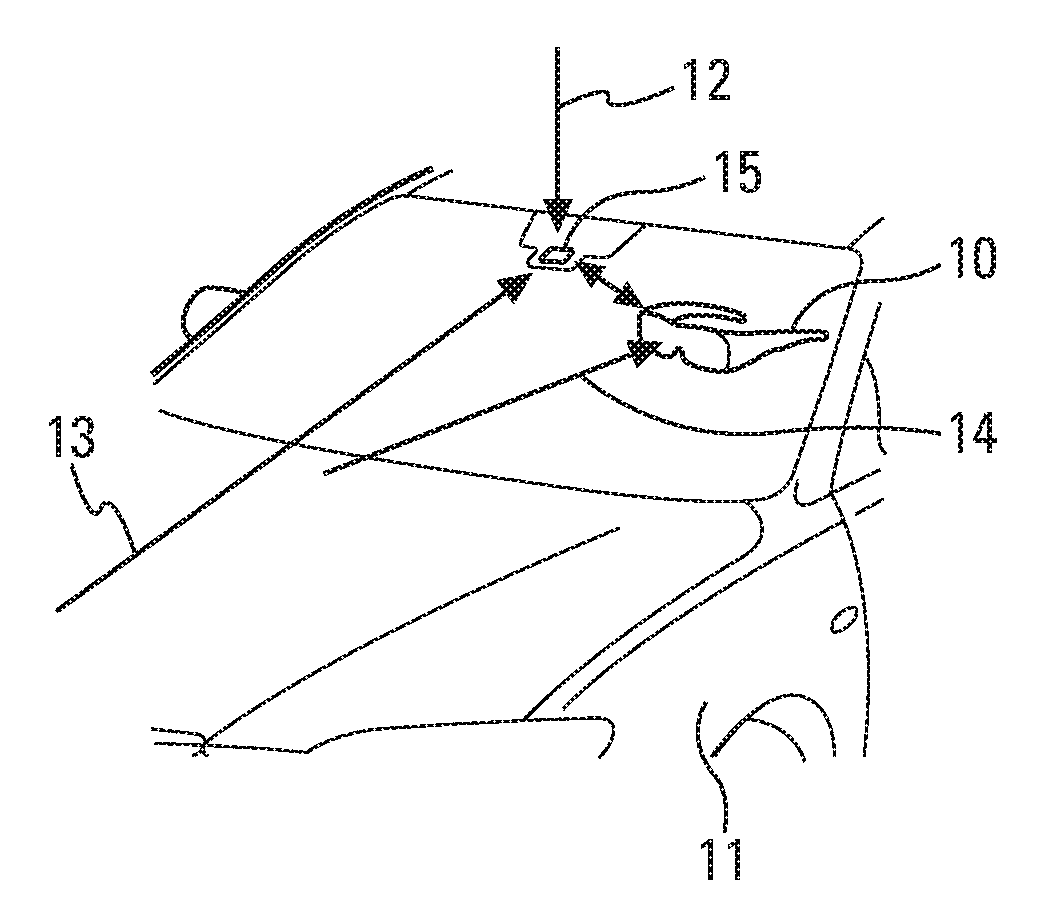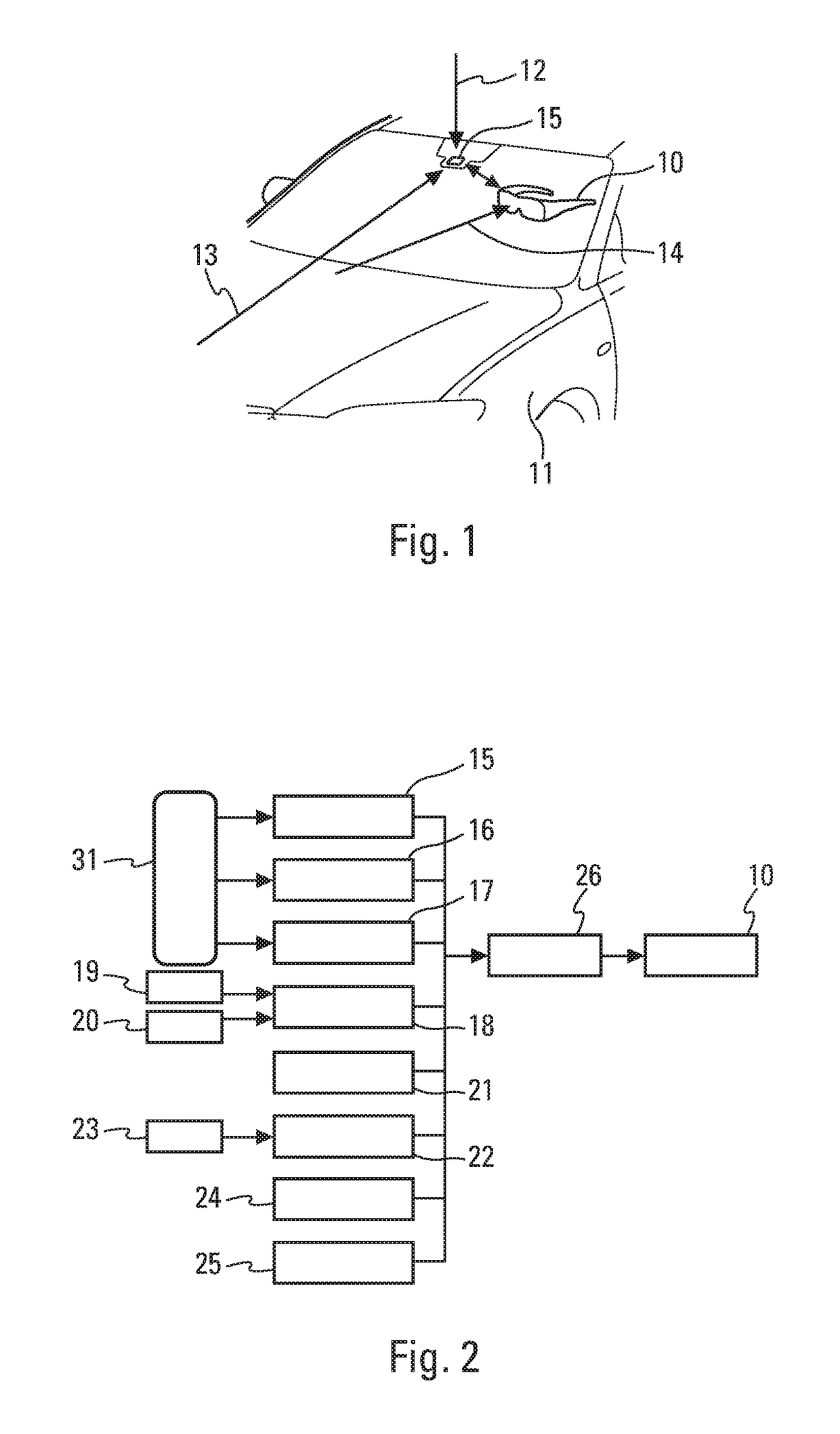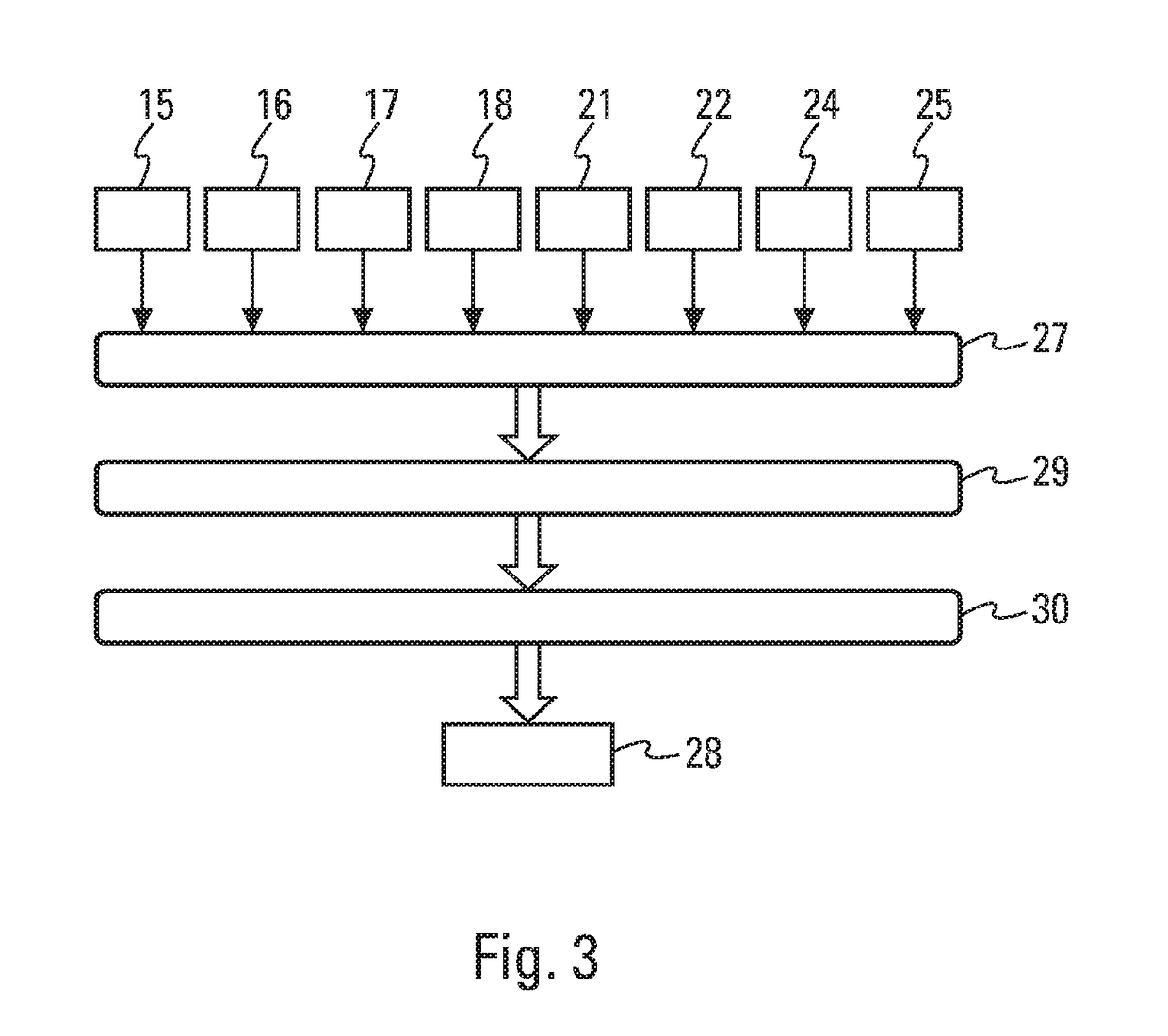Driving assistance device and method
a technology for driving assistance and motor vehicles, applied in the direction of road transportation emission reduction, vehicle components, instruments, etc., can solve the problems of reducing the transparency of the screen with variable transmission, not being able to adapt the transmission coefficient, and regularly disturbing the vision of the driver
- Summary
- Abstract
- Description
- Claims
- Application Information
AI Technical Summary
Benefits of technology
Problems solved by technology
Method used
Image
Examples
Embodiment Construction
[0082]The invention relates to a device and a method for assisting in the driving of a vehicle, one of the objectives of which is to compute the transmission coefficient of a screen with variable transmission. This screen with variable transmission is arranged in the field of view of the driver of the vehicle, between the latter and the road scene.
[0083]According to different embodiments of the invention, the screen with variable transmission can comprise:[0084]an actual screen, placed between the driver and the windshield, for example that can be folded back in the manner of a sun shield,[0085]the windshield itself, or[0086]a pair of spectacles, worn by the driver, like sunglasses or corrective glasses.
[0087]The level of transparency of the screen with variable transmission is defined by a transmission coefficient of the screen with variable transmission, driven by the assistance device, and varying between a maximum value corresponding to a maximum transparency of the screen, and ...
PUM
| Property | Measurement | Unit |
|---|---|---|
| transparency | aaaaa | aaaaa |
| angle A2 | aaaaa | aaaaa |
| angle A2 | aaaaa | aaaaa |
Abstract
Description
Claims
Application Information
 Login to View More
Login to View More - R&D
- Intellectual Property
- Life Sciences
- Materials
- Tech Scout
- Unparalleled Data Quality
- Higher Quality Content
- 60% Fewer Hallucinations
Browse by: Latest US Patents, China's latest patents, Technical Efficacy Thesaurus, Application Domain, Technology Topic, Popular Technical Reports.
© 2025 PatSnap. All rights reserved.Legal|Privacy policy|Modern Slavery Act Transparency Statement|Sitemap|About US| Contact US: help@patsnap.com



